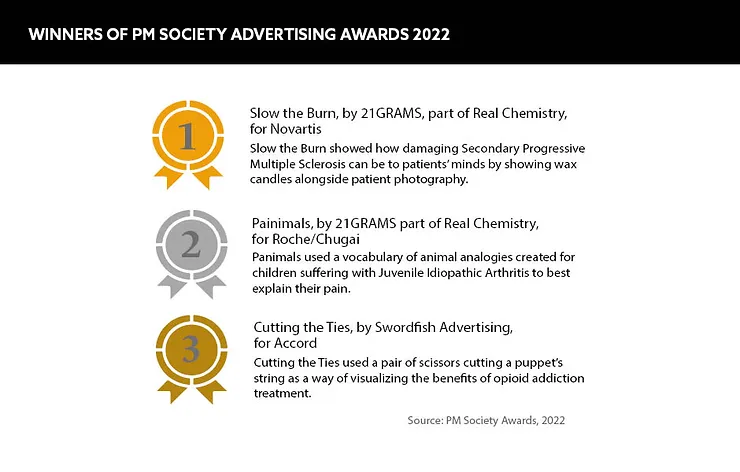Pharmaceutical marketers are beginning to understand the value of creative campaigns, but how can they adopt more inventive approaches with the help of external players?
Words by Jade Williams
The creativity of a campaign can make or break a pharmaceutical product launch. Despite the years of hard work and research that can go into developing a new therapy or treatment, if the intended audience doesn’t connect with the campaign, it can fall flat. While this is a waste of valuable time and resources in any industry, it is particularly hard on pharma, as patients may miss out on new treatments as a result of a failed campaign.
Regulatory rigidity
“Pharma is still infantile when it comes to unleashing its creativity,” asserts Gaurav Sanganee, Founder and Manging Director, Closing Delta, a consultancy providing tailored solutions to pharma. The industry is known to be relatively slow compared to other sectors when it comes to non-scientific advances, and this trend extends to marketing campaigns.
Pharma is still infantile when it comes to unleashing its creativity
One driving force behind this may be the sheer volume of compliance and regulatory frameworks that must be adhered to when promoting a product to HCPs, and even more rigorously when promoting to patients. The industry needs to make braver choices, but these limitations mean a careful approach is necessary.
Break with tradition
Delving into the traditional marketing methods that pharma companies usually take, Robert Grimm, Digital Marketing and Transformation Manager, Novo Nordisk, states that, while conservative, they have “proven to be successful for many years”, and he doesn’t see this changing any time soon. While more creativity could benefit campaigns, the regulatory hoops that need to be jumped through can make this difficult to accommodate in certain cases.
“It would be beneficial for companies to have creative expertise in-house due to the speed of releasing material, reduce internal timelines, medical, legal and regulatory processes etc.,” Grimm offers as a potential solution. Working with agencies can extend a campaign’s timeline, so hiring in-house talent can lead to quick solutions to problems and outweigh the need for external creatives.
Creativity is all about who breaks through that barrier first
“Nevertheless,” he counters, “it’s also a good point to continue to collaborate with external agencies due to the great talents circulating the market.” Marketing firms are amongst the best at what they do, and pharma would be foolish to not invite external experts to the table when it suits the campaign.
Grimm goes on to say that bringing a fresh set of eyes to a campaign can have beneficial results when it comes to issues that pharma companies might not necessarily think to tackle. “Providing agencies with the possibility to creatively approach sensitive topics is a great way to gain new perspectives within any organisation,” he summarises.
Bayer’s approach
Bayer’s ‘The Vagina Academy’, the brainchild of its open-table meeting, is an educational campaign to promote its Canesten thrush treatment. Launched by its consumer health branch, the campaign is stellar example of how creativity can drive impact and engagement with medical products.
Before Bayer began coming up with ideas for its new campaign, Patricia Corsi, Chief Marketing, Digital and Information Officer, Bayer, looked at how traditional offerings were falling short of expectations. She told The Drum that “there was more focus on communicating science and product benefits to professionals versus using creativity and consumer-centric language to help educate and guide consumer understanding of their own health”. While prescription medicine and consumer healthcare are different beasts, pharma can still learn from this approach.
Traditional thinking may be driving the direction of marketing campaigns today, but creative approaches, driven by their ability to tap into patient challenges, have the power to better influence HCPs and patient populations. So how can companies follow Bayer’s lead and develop campaigns that resonate with key stakeholders?
Take a risk
Tackling taboo topics and bringing new insights to the table can be a huge first step in developing a winning campaign. “Creativity is all about who breaks through that barrier first,” comments Sanganee. Indeed, stepping into the unknown and addressing issues that have not been discussed before can be a surefire way to ensure that a campaign sticks in the mind of an HCP. But when it comes to demonstrating creativity, size matters.
“It’s the small companies that show the most creativity,” Sanganee continues. He explains that this is because they are less afraid to push the boundaries when breaking into the market. “The problem with vanilla campaigns is that no one finds them offensive, but they don’t quite tingle the tastebuds.”
Sanganee also points out that although the pharma industry has been developing marketing campaigns for years, many still fall victim to using the same tired stereotypes of patient populations. He asks: “How many more diabetes campaigns can we expect that depict a plus-sized individual in boxing gloves?” According to Sanganee, creativity within the industry has all but stagnated as marketing teams are falling into the same patterns time and time again.
It would therefore be beneficial for teams to follow Bayer’s lead and set up open-table meetings, crucially, with no agenda, to allow ideas to emerge more freely. This would be another context where inviting agencies to participate could be the ticket to success. “You’re never with the end consumer in pharma, so it can be hard for internal marketers,” admits Sanganee, and Grimm agrees that “many companies would benefit from following the same approach as Bayer and letting the creativity flow”.
Bayer’s innovative approach to its marketing campaign garnered the company great engagement with their product, and it is something that could be equally as achievable for other pharma companies. Encouraging creativity is always a step in the right direction, and breathing new life into pharma’s sometimes archaic campaigns through open discussions with agencies could allow them to bloom.










